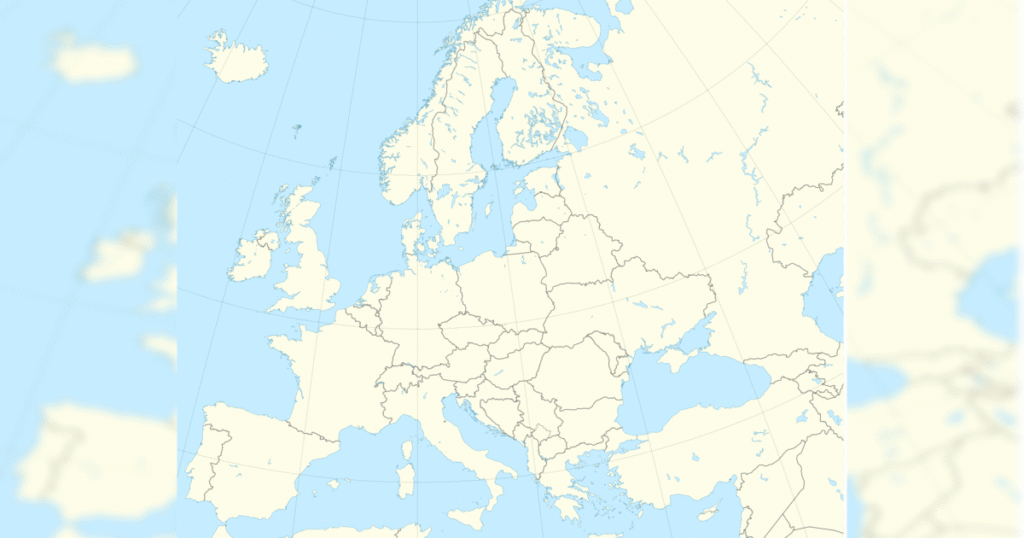Guest post by Drieu Godefridi
The concept of the “Great Replacement“, popularised by the French writer Renaud Camus, is the subject of heated debate in Europe and the US. It refers to the hypothesis of a demographic replacement of native European populations by immigrant populations, mainly from Africa and the Middle East, as a result of migration dynamics and differences in birth rates.
This term, often associated with polemical discourse, deserves a factual examination to disentangle what is myth, reality or taboo.
Let’s explore the available data in Europe, the arguments on both sides and the reasons why the subject remains so sensitive.
Demographics: What do the figures say?
To assess the “Great Replacement” thesis, it is essential to rely on reliable statistics. In Europe, demographic trends show two distinct phenomena: a decline in the birth rate among European populations and sustained immigration over several decades.
Decline in the European birth rate
According to Eurostat, the fertility rate in the European Union (EU) has fallen from 2.1 children per woman in 1970 (the level needed to renew generations) to around 1.38 in 2023. In countries such as Italy (1.2), Spain (1.12) and Germany (1.4), this decline is particularly marked. At the same time, the ageing of the population is accelerating: in 2020, 20.6% of Europeans were over 65, a figure projected to rise to 30% by 2050.
Immigration and demographic composition
Immigration is a key factor in the evolution of European populations. In 2022, the EU has welcomed 5.1 million (!) migrants (legal and illegal), mainly from Africa, the Middle East and South Asia (Eurostat). According to the Pew Research Center, people of non-European origin account for around 10% of the EU’s total population in 2020, compared with less than 4% in 1990. In some countries, such as France, Sweden and the Netherlands, the proportion is higher, particularly in large cities. In Brussels, for example, over 40% of the population is of non-European origin (source Statbel).
Birth rates among immigrant populations
Data shows that women of immigrant origin, particularly first-generation immigrants, often have higher fertility rates than ‘native’ European women. In France, for example, INSEE reports that women born outside the EU have an average fertility rate of 2.3, compared with 1.7 for women born in France. However, this differential tends to narrow with subsequent generations.
On the basis of these figures, demographic projections vary. The Pew Research Center estimates that, by 2050, populations of non-European origin should account for 20% of the population in several European countries, depending on migration policies and birth rate trends. These projections do not mean total ‘replacement’, but a significant transformation of the demographic composition.
Arguments for and against the “Great Replacement” thesis
The proponents of the thesis
Those who defend the idea of the “Great Replacement” rely on the demographic trends described above, which are as massive as they are indisputable. They argue that the combination of a low European birth rate, continued immigration and higher fertility rates among immigrant populations is inevitably leading to a reduction in the proportion of “native” populations.
Opponents
It is stressed that migration – all migration – is a “normal” historical phenomenon, driven by economic, political and humanitarian factors. According to these analysts, demographic projections do not justify the alarmist term “replacement”, because immigrant populations integrate, gradually adopting the demographic behaviour of the host countries. They accuse the GR thesis of indulging in xenophobic rhetoric, stigmatising migrants and fuelling social tensions. Institutions such as the UN and pro-immigration think tanks stress the economic benefits of migration to offset the ageing of Europe’s populations.
The Great Replacement: myth, reality or taboo?
The figures confirm a radical demographic transformation in Europe – in quantity and speed – with a rapid increase in the proportion of populations of non-European origin. A significant proportion of Muslim migrants and their descendants unambiguously identify with radical Islam, including its anti-Semitic prejudices and stereotypes. In essence, this radical Islam, which rejects the very idea of democratic law, is categorically incompatible with Western civilisation. If there is no longer any common law, all that remains is a fractured, Lebanonised, Balkanised society in permanent internal conflict. The great replacement as a result of radical demographic change in Europe is a factual reality, as clear as the sun in August.
For some, this phenomenon has been orchestrated by globalised elites; from this point of view, the Great Replacement is the result of some kind of conspiracy. I don’t share this point of view. For while ideologies and powerful ideologues — Soros, Steve Job’s widow — are obviously in favour of the obliteration of borders, important local factors also come into play. The question of immigration to Europe, for example, would never have arisen if there hadn’t been a collapse in ‘local’ demographics in the first place (see Jean-Claude Chesnais, La transition démographique, 1986 and Massimo Livi-Bacc, A Concise History of World Population, 1989).
Rather than giving in to polemics, isn’t the challenge for our societies to manage those developments pragmatically? Encouraging active integration, freeing Muslims from the totalitarian gangue of islam and its anti-Semitic overtones — if such a thing is still possible — strengthening social cohesion and rethinking migration policies to meet economic needs while respecting citizens’ concerns. By excluding those who refuse any form of economic and cultural integration, and putting in place effective removal processes.
Which brings us to another taboo of the Left: remigration.
Drieu Godefridi is a jurist (University Saint-Louis, University of Louvain), philosopher (University Saint-Louis, University of Louvain) and PhD in legal theory (Paris IV-Sorbonne). He is an entrepreneur, CEO of a European private education group and director of PAN Medias Group. He is the author of The Green Reich (2020).
You can follow Drieu on X.
Read the full article here
